Referencing a design that uses a more expensive OpAmp, I have put together (in simulation) this current sensing circuit that uses one half of an LM358. I would like to use the other half of the LM358 to invert the output of this circuit. That is, where right now the output is 0V when there is no current through the load increasing linearly to 5V when the maximum current is reached, I would like an output of 5V when there is no current decreasing to 0V when the threshold maximum current is reached.
I have made several attempts at adding an OpAmp inverter circuit (again referencing the basic diagrams found via Google), but I have not been able to hack the two circuits together properly. How can I wire the other side of the LM358 to accomplish this?

Edit: After some more playing around with the simulator I realized that I was misunderstanding the inverting OpAmp concept, among other things. I am still curious to know if there's a relatively simple analog circuit that will accomplish my stated goal, but I (think I) understand now that it's not going to be a matter of just wiring up the second OpAmp with a few resistors.

